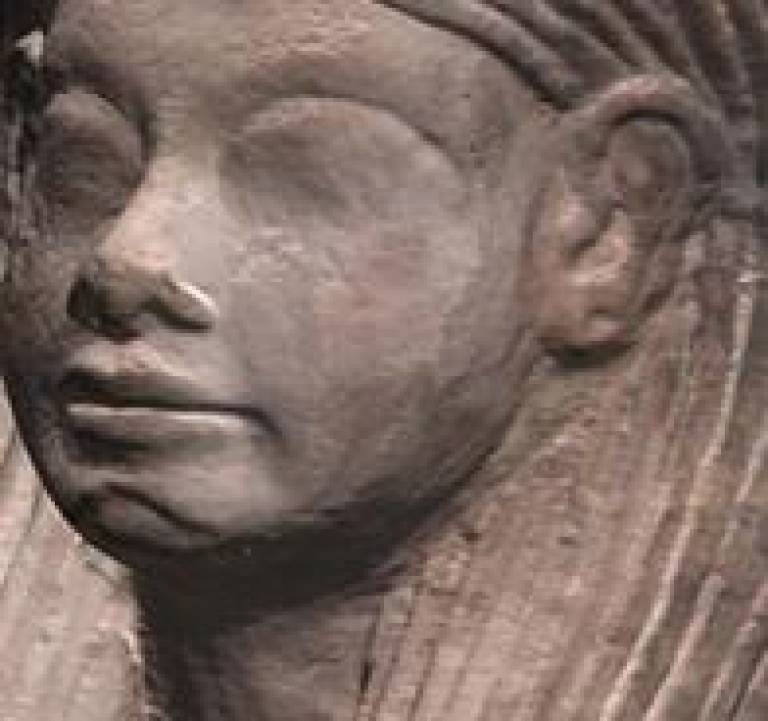New business partnerships to develop virtual exhibitions
31 March 2009
Links:
 arius3d.com/" target="_self">Arius3D
arius3d.com/" target="_self">Arius3D
UCL has signed new partnership agreements, negotiated by Dr Anna Clark, Director of UCL Business Partnerships, which will enable the university to take a leading role in the development of virtual exhibitions in the arts and heritage sector.
UCL has also extended its three-year agreement with the Canadian company Arius3D for the loan of a 3D colour laser based in the interdisciplinary UCL Chorley Institute. The laser has already been used to scan artefacts in the UCL Petrie Museum of Egyptian Archaeology, which can display and support 3D imaging of its collection, while retaining copyright of the images.
The colour laser, licensed to Arius3D, was installed at UCL in 2006. The scanner was the first of its kind in Europe and has already generated more than £2.5 million of research funding proposals, as well as numerous workshops and seminars. Professor Stuart Robson (UCL Civil, Environmental & Geomatic Engineering) has been working with with Sally MacDonald, Director of UCL Museums & Collections, on interdisciplinary initiatives using the new technology to further relationships with external institutions, including the British Museum and the National Trust.
Sally MacDonald commented: "We are delighted to have the opportunity to create touring exhibitions based on 3D scans of artefacts from the Petrie Museum; one of UCL's most important collections.
"This allows us to experiment with completely different ways of exhibiting objects, and of engaging visitors with our collections. We're also very excited by the potential to take collections-based research to audiences worldwide. Because these exhibitions need not involve real artefacts, they could be shown in all sorts of different venues and contexts."
In addition, UCL has also entered into a contract with the Irish-funded company Íomhánna Éigipteach Teoranta (IET), for licensing 3D images and for the development of virtual exhibitions. Dr Mike Spearman, Director of IET added that this was "a unique opportunity to combine groundbreaking 3D technology with one of the great Egyptology collections".
UCL will benefit from the latest generation of 3D colour scanning technology (with a new mobile scanner), associated software, funding of scanning, and curatorial staff. The UCL Petrie Museum will also derive income from the new agreements' licensing and royalty provisions, transacted through UCL Business.
UCL aims to set international standards for 3D laser technology and 3D visualisation in the heritage sector, as well as developing significant new technologies for authentication, registration and measurement of decay. The scanner's applications also serve a range of sectors, including engineering, medicine, dentistry, anthropology, archaeology, art and architecture.
Images
Top: Limestone Shabti, Dynasty 18 (1295BCE-1550BCE), scanned by the Arius3D scanner
Middle: Professor Stuart Robson (left) and Dr Mike Spearman (right)
Below: A selection of objects from the UCL Petrie Museum
UCL Context
UCL Museums & Collections
UCL houses a number of museums and art collections, including the Petrie Museum, the Grant Museum of Zoology, the Galton Collection and the Institute of Archaeology Collections, and the Strang Print Room.
All the venues are open to the public and operate as study centres for the UCL community.
UCL Business Partnerships
UCL works in a variety of partnerships with multinational companies in energy and resources, telecommunications, transport and construction as well as with smaller companies in art, advertising, communication, imaging and entertainment.
Dr Anna Clark is responsible for negotiating and maintaining strategic alliances and tailored partnerships. She works closely with senior management in industry and with UCL academics to identify key strategies for partnership and to develop a range of collaborative projects over a broad range of fields.
Related stories
Collaborative partnership with Arius3D
Latest generation 3D colour laser scanner opened
 Close
Close

